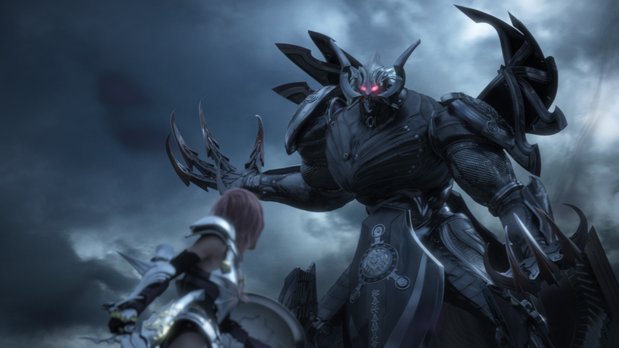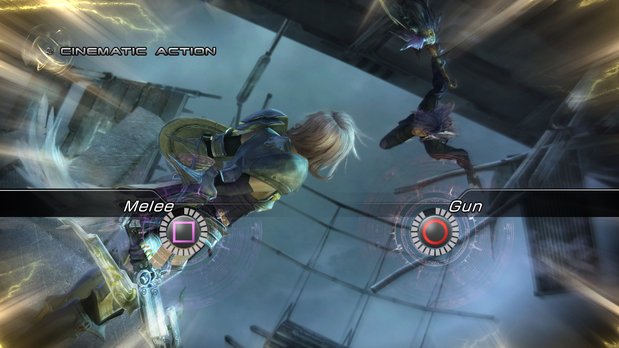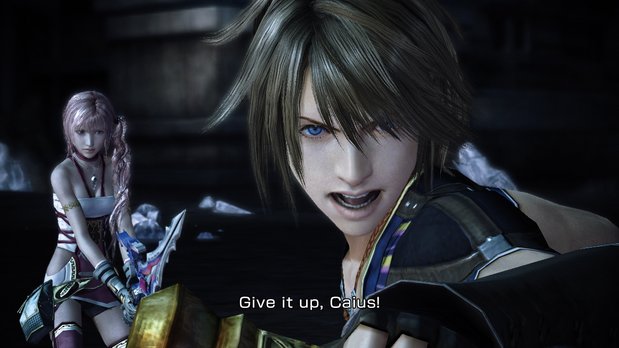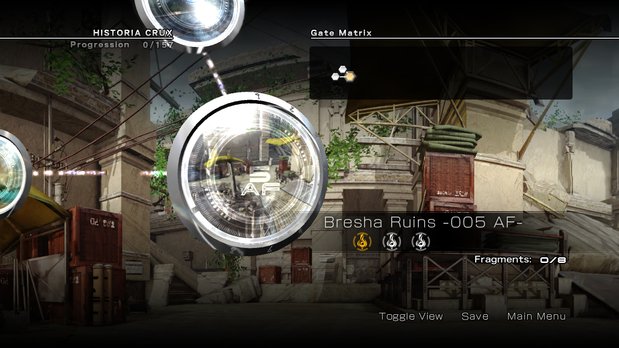Final Fantasy XIII-2 preview The first five hours and beyond
We start from the beginning and play all day to see how non-linear this sequel really is
In its decidedly non-linear, time-bending approach, Final Fantasy XIII-2 has positioned itself as a response to fan criticism of FFXIII, directly addressing complaints about its predecessor's linearity and lack of exploration. But how much has really changed in the sequel, and how much of it is just window dressing? It's difficult to tell by just looking at screens and trailers. To clear things up, we recently had a chance to sit down and play FFXIII-2 at length, from the very beginning through as far as we could get in a day of playtime. We can now safely say that the structure of the game is, indeed, completely different.
[SPOILER WARNING: Ending details for Final Fantasy XIII and early plot details of XIII-2. FFXIII-2 picks up right where XIII ends, so it's impossible to discuss the sequel's story set-up without discussing the ending of XIII].

Since time is malleable in XIII-2, the narrative doesn't always follow a chronological path. The game opens in Valhalla, the realm outside of normal space and time, where Lightning and her purple-clad rival, named Caius, are locked in battle. As Caius morphs into Chaos Bahamut, Lightning summons horse-form Odin and then gallops at a break-neck speed while the two continue to clash across land and sky in a fight so visually over-the-top it looks like demigods at war. At first, this feels reminiscent of a one-on-one summon battle from FFXIII on a grander scale, but we're quickly introduced to XIII-2's new Cinematic Action system.
While the overall battle system is largely unchanged from FFXIII, Cinematic Actions (read: quick time events) are now peppered into both battle sequences and cutscenes. Some of them affect the way the scene plays out, but it this case, hitting the button prompts correctly gave us the upper hand against Caius.

Suddenly, Noel falls from the sky, after apparently praying hard enough to transport himself to Valhalla, and Lightning catches him easily. Because of this apparent power to enter the timeless realm, Lightning asks him to go back to the mortal realm and find Serah for her. She quickly gives him Mog the Moogle and shows him the door – Etro's Gate. Noel departs, leaving Lightning and Caius still fighting, and the scene ends.
Back in the "real" world, the next scene opens with Serah and her new life on Pulse, where a small community of former Cocoon residents have rebuilt a version of their old home, now called New Bodhum. Snow's old hooligan friends from NORA are all here, except for Snow himself, but there seems to be an unspoken reason as to why he's not there. The most conspicuous absence though is Lightning. But the odd thing is, everyone talks like Lightning was trapped in the pillar of crystal when Cocoon came crashing down at the end of XIII. Serah feels like she's going crazy, because she's the only one who remembers things differently, where Lightning survived and only Fang and Vanille sacrificed themselves to summon Ragnarok.
Above: The altered timeline at the start of FFXIII-2
Sign up to the GamesRadar+ Newsletter
Weekly digests, tales from the communities you love, and more
In New Bodhum, we see two new features of XIII-2 right away. First, it has the feel of a proper town, with stuff to explore and NPCs to talk to, and even has various side quests you can take on. It's unlike any of the static environments of its predecessor, and definitely feels like a more traditional JRPG town. While chatting with Bodhum's various denizens, we also discover the new Live Trigger dialogue feature, where you can choose the protagonist's response (depending on who you're controlling at that time) much like a BioWare dialogue wheel.
Instead of always leaning toward either good or evil though, we saw a variety of different conversational tone options here, although from what we've played so far it doesn't seem like your choices affect the gameplay all that much. In one live trigger where Noel asks Serah what's keeping her in her hometown, she has the option to talk about her family and friends, but there's also a jokey option where she can say that her cat is the only thing worth living for (the cat's name is Snow, after all, named after her fiancé). This way, you can choose to play it straight or be a little goofier, depending on your mood and play style. The tone of FFXIII-2 is more lighthearted overall, and where FFXIII was completely devoid of humor, XIII-2 definitely feels like it takes itself a little less seriously.

Above: Noel is from 700 years in the future, from a time when Cocoon doesn't exist and humanity is on the verge of extinction
Speaking of Noel, he arrives unannounced in New Bodhum (directly from Valhalla, we presume), when the peaceful village suddenly erupts into monster-filled chaos after a meteor hits. He and Serah team up to clear away the threat, and he tells her about his meeting with Lightning. At first, Serah is incredulous, but as Noel opens up about where he's from (the future!!) and what he knows about her sister, the two decide to team up and find Lightning together.
To set the timeline back to the way things "should" be according to Serah's memory, they determine that they must find artifacts that are out of place in time, and use them to open up time gates to different points in time and space where they can make crucial changes to history. In this case, the meteor opens up a time gate and they begin their quest.

Above: "AF" stands for "After Fall," marking when Cocoon fell at the end of XIII
This is where we see FFXIII-2's first potential to be completely non-linear. The Historia Crux functions as a world map, but it's much more than that too – as you unlock spheres on its grid, you gain access not only various geographical locations but portals into those locations at various points in time. Via the Historia Crux, you can explore both Pulse and Cocoon throughout history.



